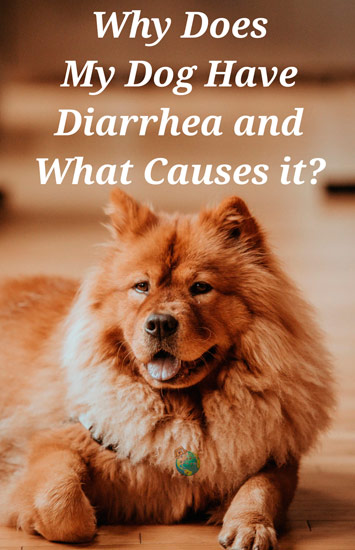Does your dog have loose stools? Dog treats can cause loose stools but it could be something more. What causes your dog to have diarrhea? This article will discuss and explain diarrhea. We will explain the difference between “normal” poop and diarrhea, what’s causing your dog to have diarrhea, and how to prevent dog diarrhea.
What is Diarrhea?
Diarrhea is defined as loose unformed stools occurring three or more times throughout one day. If your dog has loose stools once it is not diarrhea, rather a loose bowel movement. Whether your dog has diarrhea or one loose bowel movement, their digestive system may be unhappy. In other words, digestive upset can occur for several reasons.
Diarrhea is easily identifiable. Formed stools should not contain mucus, blood, liquid, or undigested food. If your dog eats something difficult to digest, it may present in their stool. For example, corn or rubbish are common culprits. On the other hand, diarrhea is liquid in texture and varies in color from bright yellow to black. Reds, grays, greens, and beige colors are common also. Above all, color can tell you what’s happening in your dog’s digestive system.
What Causes Diarrhea?
Main causes of loose stools are intestinal parasites and dietary allergies. Heart medication, de-wormers, antibiotics, pain medications and excitement can cause diarrhea. Contact your Veterinarian if your dog takes medication. Feed your dog a bland diet If medication is mandatory. For instance, white rice and lean ground beef/chicken is recommended to ease an upset digestive system.
Parasites Causing Diarrhea
Is your dog suffering from parasites or is food the culprit? There are 3 types of worms that can infect your dog. These worms then cause infections.
Roundworms
Roundworms (also known as whipworms) can grow up to 7 inches long and lay hundreds of thousands of eggs. They are the most common parasite. Roundworms cause infection known as Trichuriasis in the tissue of the rectum, colon, and appendix.
Hookworms
Hookworms are not seen often because they typically thrive in hot climates with high humidity. These worms grow between .25 and .5 inches long and latch onto the small intestines to absorb blood and tissue from the mucosa leading to malnutrition and blood loss.
Threadworms
Threadworms, sometimes termed “pinworms”, are harmful to humans because they can be transmitted from dogs to humans. Transmission usually occurs by contact with an infected dog’s feces orally or through open skin.
Giaradia Causing Diarrhea
Dog infections can occur from Giardia. This parasitic species infects the intestines. Some dogs show no symptoms while infected with Giardia. If you suspect an illness and your dog is not having symptoms, track normal daily activity and eating habits. The feeding form of Giardia remains in the infected dog’s intestines. Cystic form of Giardia is passed through the dog’s feces. This cystic form can infect any dog that ingests, licks, or sniffs the feces. Common transfer of the parasite occurs through water.
Acquiring Parasites
There are several ways dogs can acquire parasites:
- Parasites are transferred in the uterus of the mother during pregnancy
- Through the mother pup’s milk, through open- skin contact (like the paws)
- Ingesting the feces directly and through dirt or water infected with larvae
Parasites cause several symptoms. Diarrhea is the most prevalent symptom. Symptoms also include abdominal pain, weakness, dehydration from loose stools, and tiredness. Homes with infected dogs should be sanitized regularly and properly. Here are a few important steps to take.
Precautions for Parasites and Infection
- Seclude infected dogs from other pets, especially cats and dogs since they are susceptible to parasites.
- Wear gloves and clean your dog’s feces from the yard/sidewalk with a scooping device and a clean waste bag.
- If your dog has loose stools in your home immediately clean the feces and sanitize the area with a proper disinfectant cleaning solution.
- Dispose of the feces so no human or animal contacts the parasites and infection.
- Change your dog’s water regularly to reduce the chances of contaminated water.
- Wash your hands! Parasite larvae (eggs) are sticky so they can stick on clothing, hands, and shoes after stepping in the dirt where your dog relieved him/herself.
Immediately visit your veterinarian if your dog has a parasite or infection. A de-wormer or antibiotic may be prescribed and regular heartworm medicine may be suggested.
Dietary Upset Causing Diarrhea
Dietary upset can cause acute loose stools and diarrhea. Does your dog eat garbage? You may find them eating garbage, grass, plants, wood, decaying food or animals, and plastic. It’s unlikely that your dog can digest these items which usually results in vomiting before digestion occurs.
Certain foods, which may appear harmless, can cause diarrhea if your dog has an intolerance or an allergy. With both allergies and an intolerance your dog may vomit, have stomach pain, and diarrhea. The additional allergy symptoms allow you to rule out a food intolerance.
Food allergies usually result in trouble breathing, rashes, and itching. As a result, your dog may be intolerant to a number of ingredients commonly found in food and treats. Allergens include eggs, corn, beef, wheat, chicken, spices, and soy. If your dog is intolerant to one of these foods you should remove possible culprits from your dog’s diet. Then slowly reintroduce each food. While you reintroduce each food, keep a journal of your dog’s reactions.
Check out What Can I Feed My Dog? for a list of commonly safe foods. Always consult a veterinarian before implementing any changes to your dog’s lifestyle.
What Diarrhea Can Tell You
The color, texture, frequency, and odor of your dog’s diarrhea says a lot. Earlier we discussed color as an indicator of what is happening in your dog’s digestive system. In addition, red and black feces can indicate bleeding in the lower/upper GI tract respectively. However, watery, yellow, gray, or green feces may indicate quick digestion. In addition, if a distinct smell of a certain food is present, this may also indicate quick digestion. Also, beige shades may indicate a lack of bile. Bile is produced by the liver and stored in the gallbladder. It aids in digestion by helping break down fats into fatty acids. However, foamy stools may indicate a bacterial infection while shiny or oily stools may indicate mal-absorption.
Kimberly Mattar
August 20th, 2014
Latest Update: August 27th, 2020

Kim is the co-owner of DogLoverStore with her husband, John. She earned her BS in operations management at the University of Massachusetts Dartmouth. She enjoys walking in nature, gardening in the sun, eating sour candy, going on drives, yoga, and reading.


